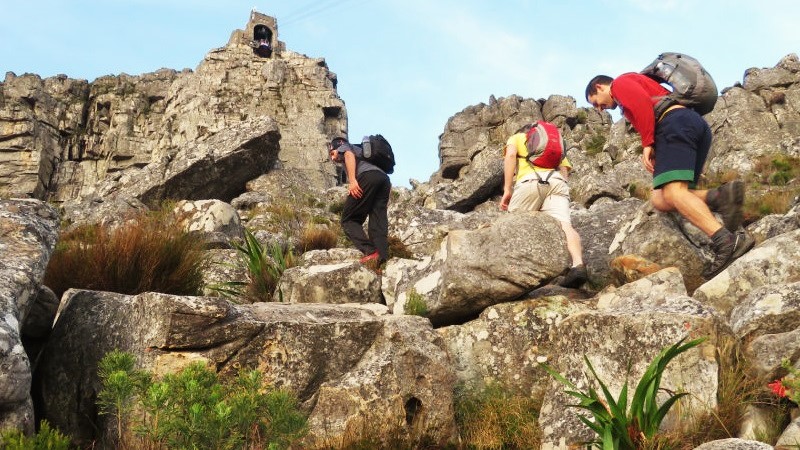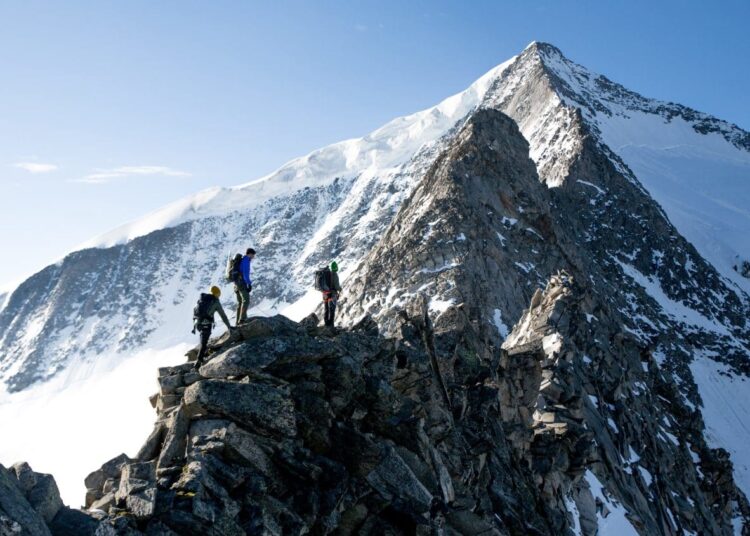Are you looking for a new and exciting adventure that will test your limits and provide breathtaking views? If so, then mountaineering and alpine climbing may be the perfect activity for you. In this article, we’ll explore what these sports entail, their history, the equipment needed, and the various skills required to tackle these challenging peaks. Whether you are an experienced mountaineer or just starting out, you will gain valuable insights into these thrilling outdoor pursuits.
Mountaineering and alpine climbing are outdoor activities that involve ascending mountains and peaks. These sports require a combination of physical strength, endurance, and technical skills, making them a true test of both mind and body. The excitement and challenge of reaching the summit of a mountain are what draw many people to these activities, and the stunning views from the top are a reward in themselves.
A Brief History of Mountaineering and Alpine Climbing
The history of mountaineering and alpine climbing dates back thousands of years, with the earliest recorded ascent of a mountain being made by the ancient Greeks in the 5th century BCE. Over the centuries, these activities have evolved, with advances in technology and equipment allowing climbers to tackle increasingly difficult peaks.

In the 19th century, mountaineering became a popular leisure activity, with the first climbing clubs being formed in Europe. This led to the development of new equipment and techniques and the first successful ascents of many of the world’s highest peaks. Today, mountaineering and alpine climbing are popular activities around the world, with many people traveling to remote locations to experience the thrill of reaching a mountain summit.
The Equipment Needed
Mountaineering and alpine climbing require a significant amount of specialized equipment to ensure a safe and successful climb. Some of the essential equipment needed for these activities include:
- Climbing Harness: A harness is worn around the waist and legs to secure the climber to the rope and provide support while climbing.
- Carabiners: These are metal loops with a spring-loaded gate that are used to connect the climber to the rope and other pieces of equipment.
- Belay Device: A belay device is used to control the rope while belaying and to increase friction when rappelling.
- Climbing Helmet: A helmet is worn to protect the head from falling rocks and other hazards while climbing.
- Mountaineering Boots: These boots are specially designed for use in mountaineering and alpine climbing, providing the necessary support and protection for the feet and ankles.
- Crampons: Crampons are metal spikes that attach to the bottom of mountaineering boots and are used for traction on snow and ice.
- Ice Ax: An ice ax is used for balance and as a tool for self-arrest if a fall occurs on snow or ice.
- Rope: A rope is used for protection and to secure the climber to the mountain.
- Climbing Anchor: A climbing anchor is a secure point on the mountain where the climber can attach themselves while belaying or rappelling.
Having the right equipment is essential for a safe and successful climb, so it is important to invest in quality gear that is appropriate for the type of climbing you plan to do. It’s also recommended to take an introductory course or hire a guide to learn how to properly use and care for your equipment.
Skills and Techniques Required
Mountaineering and alpine climbing require a range of skills and techniques to ensure a safe and successful climb. Some of the key skills and techniques needed for these activities include:
- Rope Work: Climbers must be able to properly use ropes for belaying, rappelling, and protection while climbing.
- Knot Tying: Knot tying is a crucial skill for secure attachment to the rope and other pieces of equipment.
- Movement Techniques: Climbers must be able to use proper movement techniques such as foot placement, balance, and efficient use of their hands and feet to progress up the mountain.
- Ice Climbing Techniques: For alpine climbing in snowy or icy conditions, climbers must be able to use specialized techniques such as ice axe and crampon use, as well as self-arrest techniques.
- Navigation: Climbers must be able to navigate the mountain, including route finding and map reading.
- Physical Conditioning: Mountaineering and alpine climbing are physically demanding activities, so climbers must be in good physical shape and able to withstand the rigors of high-altitude climbing.
- Emergency Response: In case of an emergency, climbers must be able to respond appropriately and have the necessary knowledge and skills to perform basic first aid and self-rescue.
- Environmental Awareness: Climbers must be aware of the environment and be able to adapt to changing weather and snow conditions, as well as be knowledgeable about Leave No Trace ethics and responsible use of the mountain environment.
These skills and techniques can be learned through formal mountaineering and alpine climbing courses, as well as through experience and mentorship from experienced climbers. It is important to continually develop and refine these skills to become a safe and proficient mountaineer or alpine climber.
Physical and Mental Preparation
Preparing for a mountaineering or alpine climbing trip requires both physical and mental preparation. Physical preparation involves building up your strength, endurance, and flexibility through a variety of activities, such as running, hiking, and weightlifting. Mental preparation involves developing the confidence and focuses needed to tackle difficult terrain and handle the physical and emotional challenges of climbing at high elevations.
Choosing a Mountain or Route

When choosing a mountain or route, it is important to consider your experience level, fitness, and the type of climb you are looking for. There are many peaks and routes to choose from, ranging from easy day hikes to multi-day expeditions on technical terrain. Some popular destinations for mountaineering and alpine climbing include the Alps, the Himalayas, and the Rocky Mountains.
Conclusion
Whether you are looking for a new challenge or simply seeking breathtaking views, mountaineering, and alpine climbing offer a unique and exciting adventure. With the right preparation and equipment, these activities can be a rewarding and fulfilling experience. From the thrill of reaching the summit to the breathtaking views, mountaineering, and alpine climbing provide an opportunity to test your limits and experience the great outdoors in a new and exciting way.
So why not take the next step and embark on your own mountaineering or alpine climbing adventure? Whether you are just starting out or an experienced climber, the challenge and excitement of these activities are sure to leave a lasting impression. Get out there and conquer those peaks!


